Bali Costumes
Like so many Asian countries, one of the wonderful things about Bali is that people wear traditional costumes as well as the ubiquitous T-shirt and jeans (or shorts). Herewith, some pictures of people in Balinese garb:
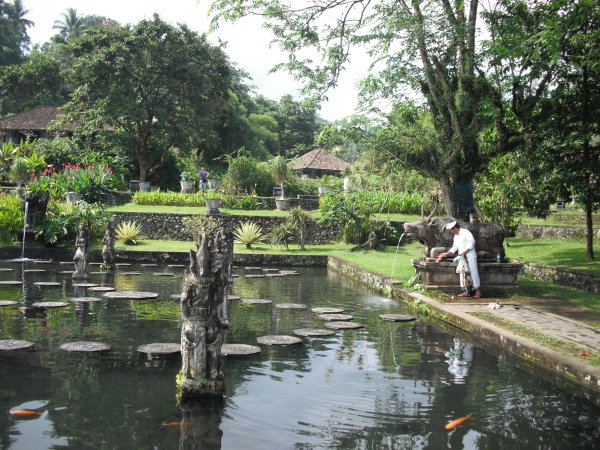
This man is wearing the Hindu turban (as opposed to the Indonesian muslim skullcap), with a peak at the front where the ultimate deity can perch when invoked. He’s also wearing a white formal shirt and a sarong. For temple use he’d also be wearing a sash, but this is not a temple – it’s a public water park built by a rajah in 1948. He’s not tending a sacred statue, but investigating the fountain-beast.
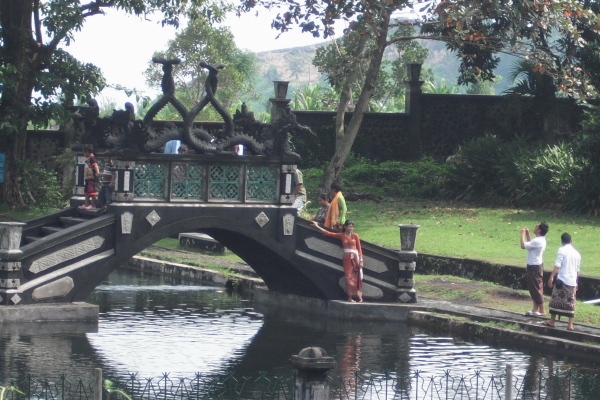
Here’s a family group at one of the fanciful bridge at the same garden (the Water Palace, or Tirta Gangga). Men and women both wear sarongs and shirts, with sashes.
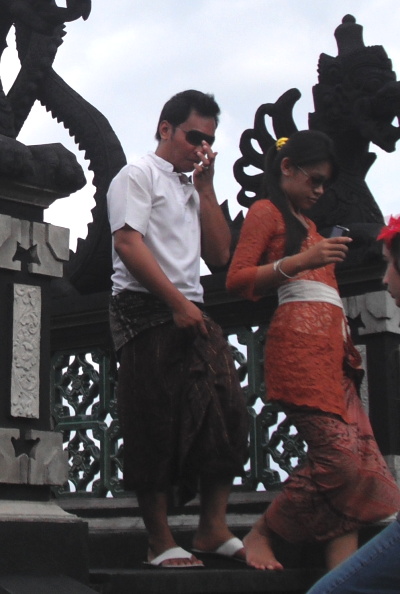
A closer look at a young couple on the bridge in traditional garb. The girl’s sash really accentuates her figure, and her sarong is lovely. Flipflops are de rigeur. Sunglasses and cameras optional.
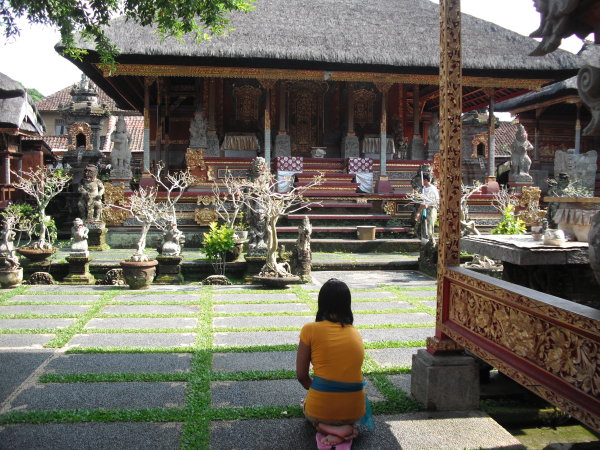
This girl is praying at the Saraswati Temple in Ubud. Sarong, sash, and T-shirt. Although we were told that T-shirts are not appropriate temple garb, I think that mostly means the usual tourist T-shirt, dirty, frayed, with ugly or commercial messages printed on it. Plain clean ones seem to be OK.
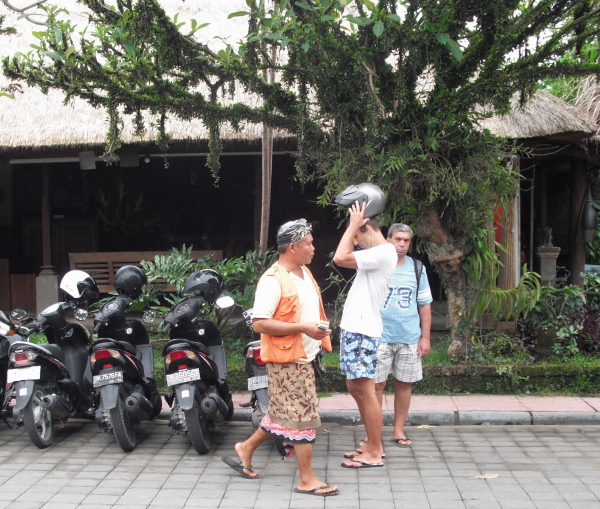
This man is in charge of motorcycle parking on the main street in the town of Ubud. He’s dressed formally, with a special colored cloth over his sarong. And of course his uniform, the official orange Parking Regulation vest.
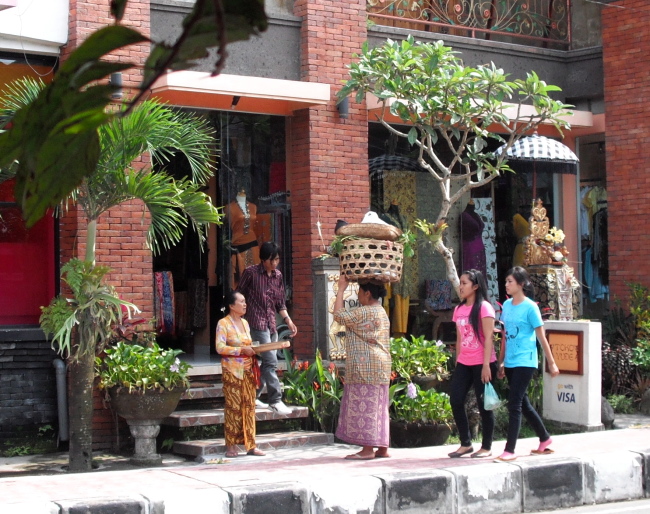
Also in Ubud, a combination of traditional and modern dress.
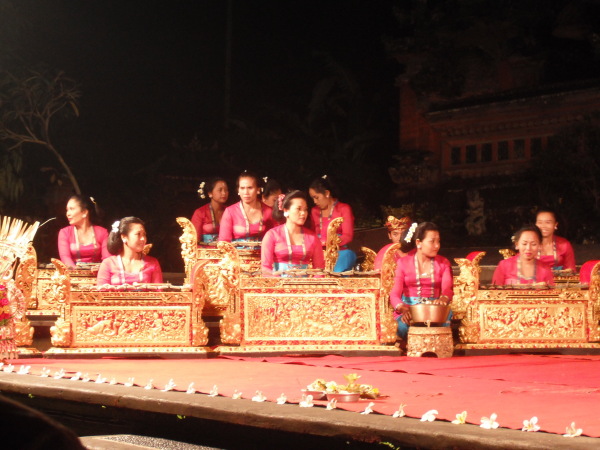
When we went to the Ramayana dance at the temple in Ubud, it was sponsored and performed by the Women’s Association of North Ubud. Unusually, the army of gamelans and gongs was played by women, who did a tremendous job. And who all dressed exactly the same, even down to their earrings and the flowers in their hair. Pink shirts, blue sarongs and sashes, matching hairdos with artificial buns if they needed them. The gamelans are also spectacular; they are housed in the temple grounds and covered in gold, as you see. These dances are a sacred art form, so people dress accordingly.
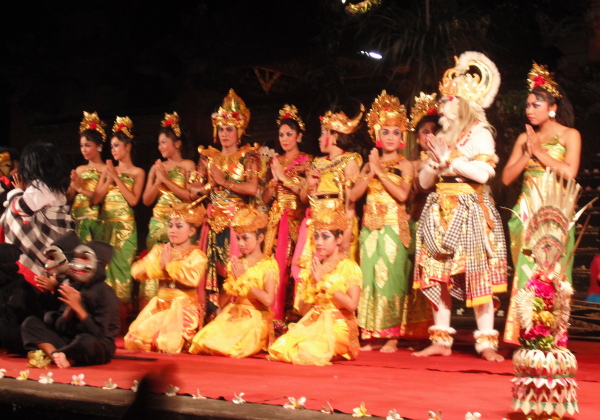
Here are the dancers of the Ramayana at the end of the piece, and although the picture is fuzzy you can see the glory of the costumes, which are dictated by tradition. The little demons, monkeys, and golden deer were danced by kids, and I saw some of the gamelan players smiling towards them offstage, so I think they and the orchestra are all family. The extra blurry tall white costume is Hanuman, whose electrifying dancing was too kinetic for my camera to catch, and who seemed (appropriately) unable to stand quite still at the end.
Rama, the hero of this story, is the king you see with the highest crown on the left of the picture. This dancer also performed as Rama in a different dance the next night, at a different temple. Apparently these glorious costumes are kept in a central repository (and cleaner’s) in the town, and the dancers go there, put them on, and make their way to the dance venue just before the performance. My husband was lucky enough to see Rama arrive at the second temple on his motor-scooter, in full regalia. And apparently he looked regal even then. Alas, we didn’t get any pictures of dancers on scooters.